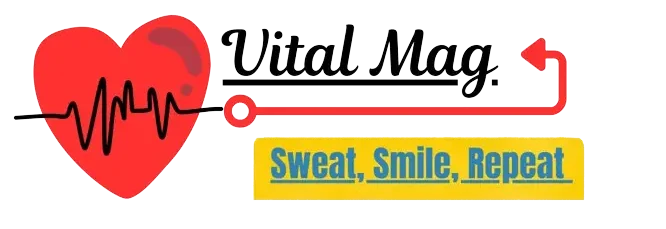Quitting smoking is a challenging journey, but with the right tools, it can become more manageable. Nicotine spray has emerged as a popular and effective option for those looking to break free from tobacco addiction. This comprehensive guide will explore everything you need to know about nicotine spray and how it can help you quit smoking in 2025.
For those ready to take the first step towards a smoke-free life, Nicorette Mouth Spray FreshMint Single offers a fast-acting solution to combat cravings. This innovative nicotine spray delivers relief in just 60 seconds, making it an ideal choice for smokers seeking immediate support in their quit journey.
What is Nicotine Spray?
Nicotine spray is a form of nicotine replacement therapy (NRT) designed to help smokers quit by delivering controlled doses of nicotine without the harmful chemicals found in cigarette smoke. It comes in a small, portable bottle with a pump that sprays nicotine directly into the mouth, where it’s quickly absorbed through the lining of the cheeks and throat.
How Does Nicotine Spray Work?
The spray works by delivering a quick dose of nicotine to the bloodstream, helping to reduce cravings and withdrawal symptoms associated with quitting smoking. Unlike cigarettes, which can take up to 10 seconds for nicotine to reach the brain, nicotine spray acts within 60 seconds, providing almost instant relief.
Benefits of Using Nicotine Spray
- Fast-acting relief: Nicotine spray provides rapid relief from cravings, often within a minute of use.
- Convenient and discreet: The small bottle can be easily carried and used without drawing attention.
- Controlled dosage: Users can adjust their nicotine intake based on their needs and gradually reduce it over time.
- No harmful chemicals: Unlike cigarettes, nicotine spray doesn’t contain tar, carbon monoxide, or other toxic substances.
- Improved success rates: Studies show that using NRT can increase the chances of quitting smoking by 50-70%.
How to Use Nicotine Spray
Using nicotine spray correctly is crucial for its effectiveness. Here’s a step-by-step guide:
- Prime the pump before first use by pressing it a few times until a fine mist appears.
- Hold the bottle upright, close to your open mouth.
- Press the top of the bottle to release one spray into your mouth.
- Avoid inhaling while spraying to prevent the mist from going into your throat.
- For best results, don’t eat or drink for 15 minutes before and after using the spray.
Recommended dosage: Start with 1-2 sprays every 30 minutes to 1 hour, or whenever you feel a craving. Most people use 1-2 cans per week in the beginning.
Effectiveness of Nicotine Spray
Research has shown that nicotine spray can be highly effective in helping smokers quit. A study published in the Addiction Journal found that nicotine mouth spray was significantly more effective than placebo in providing fast relief from urges to use e-cigarettes.
| Study Results | Nicotine Spray | Placebo |
| Reduction in urge to vape | 30.8 mm | 18.9 mm |
| Complete control of urges (over 11 hours) | Reduction in the urge to vape | 19.6% |
| At least a 50% reduction in the urge to vape | 80% | N/A |
These findings highlight the potential of nicotine spray not only for traditional smokers but also for those looking to quit vaping.
Side Effects and Precautions
While nicotine spray is generally safe when used as directed, some users may experience side effects:
- Throat irritation
- Hiccups
- Nausea
- Headache
- Dizziness
It’s important to consult with a healthcare provider before starting any NRT, especially if you have heart disease, high blood pressure, diabetes, or are pregnant or breastfeeding.
Combining Nicotine Spray with Other Quit Methods
For maximum effectiveness, nicotine spray can be used in combination with other quit-smoking strategies:
- Behavioral therapy: Counseling or support groups can address the psychological aspects of addiction.
- Other NRT products: Some people find success using nicotine patches for long-acting relief and spray for breakthrough cravings.
- Prescription medications: Drugs like varenicline or bupropion may be prescribed alongside NRT for additional support.
Cost and Availability
Nicotine spray is available over the counter in many countries. The cost can vary, but it’s generally comparable to or less than the cost of smoking. Many health insurance plans now cover NRT products, making them more accessible to those trying to quit.
Success Stories and Tips from Ex-Smokers
Many former smokers have found success with nicotine spray. Here are some tips from those who’ve quit:
- “I always kept the spray with me, especially in situations where I used to smoke.”
- “Setting a quit date and gradually reducing my cigarette intake while using the spray helped me transition.”
- “Combining the spray with a support group gave me the extra motivation I needed.”
Latest Developments in Nicotine Spray Technology
As of 2025, nicotine spray continues to evolve. Newer formulations focus on:
- Improved taste and sensation
- Longer-lasting effects
- Smart devices that track usage and provide personalized quitting plans
The Future of Smoking Cessation
The smoking cessation market is projected to reach $69.8 billion by 2034, growing at a CAGR of 9.2%. This growth reflects the increasing demand for effective quit-smoking aids like nicotine spray.
Conclusion
Nicotine spray offers a powerful tool for those looking to quit smoking in 2025. Its fast-acting nature, convenience, and proven effectiveness make it a top choice among NRT options. Remember, quitting smoking is a journey, and what works best may vary from person to person.
Latest 2024 News on Nicotine Spray
In September 2024, Health Minister Mark Holland announced new nationwide restrictions on nicotine pouches in Canada, which will take effect on August 28, 2025. These measures include strict advertising limits, banning certain flavours, and restricting sales to behind-the-counter pharmacies. While these regulations primarily target nicotine pouches, they reflect the growing concern about nicotine products and may influence future policies on other NRT products, including nicotine sprays.
Additionally, a study published in the Addiction Journal in September 2024 provided new clinical evidence showing that nicotine mouth spray can be an effective relief for vaping cravings. The research, conducted by Kenvue Inc., found that nicotine mouth spray was significantly more effective than placebo in reducing the urge to vape among regular e-cigarette users. This study opens up new possibilities for using nicotine spray not only for traditional smoking cessation but also for helping individuals quit vaping.
These developments underscore the ongoing importance of research into nicotine replacement therapies and the evolving regulatory landscape surrounding these products. As we move into 2025, it’s clear that nicotine spray will continue to play a crucial role in smoking cessation strategies, with potential expanded applications for addressing newer forms of nicotine addiction.
Read our more blogs!

